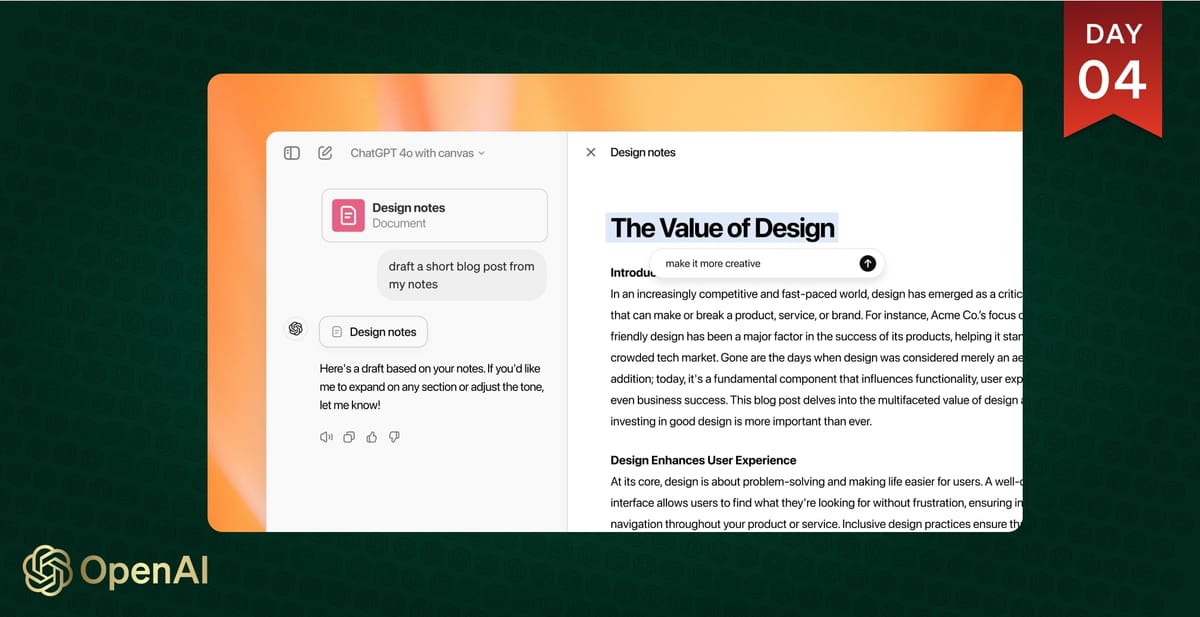
OpenAI has officially launched its ChatGPT Canvas feature out of beta, introducing a suite of new capabilities designed to enhance collaborative writing and coding directly within the ChatGPT interface. The announcement came during day four of OpenAI's "12 Days of Shipmas" event, where product lead Kevin Weil, alongside engineers Lee Byron and Alexi Christakis, demonstrated the enhanced features.
Key Points:
- Canvas, previously available only to paid users in beta, is now accessible to all users—free and paid.
- Users can execute Python code, receive inline comments, and collaborate with custom GPTs.
- Canvas provides tools for targeted edits, debugging, and dynamic visualizations.
Canvas will completely change how you engage with ChatGPT. It is a collaborative workspace that sits side-by-side with your normal ChatGPT interface, and allows for conversations and project work to unfold simultaneously. Rather than starting from scratch with each prompt, you can work with the AI on specific parts of the document.
During the livestream, the OpenAI team showcased the expanded functionality of Canvas:
- Python Code Execution: You can now run Python code directly within Canvas. The system not only identifies errors but also executes code and provides visual outputs such as charts. For example, the team demonstrated fixing a bug in a line chart and generating Sankey flow diagrams for Santa’s logistics.
- Enhanced Editing Tools: Writing tools include options to adjust text length, change reading levels, polish grammar, and even add emojis for flair. A “Show Changes” feature offers transparency by displaying edits in a diff-style format.
- Integration with Custom GPTs: Canvas now supports custom GPTs, so you can add a collaborative interface to your custom AIs.
The livestream highlighted diverse use cases for Canvas, from drafting bedtime stories to debugging Python scripts and crafting academic essays. Notably, the side-by-side interface aids users in maintaining focus on your projects while receiving real-time input from ChatGPT.
OpenAI plans to iterate further on Canvas by incorporating more capabilities, improving user experience, and expanding platform availability. As of now, the feature is rolling out to all web users and Windows desktop users (Sorry Mac users), ensuring broad access for individuals and teams alike.
With Canvas, OpenAI makes ChatGPT a much more robust assistant for creative professionals, coders, and anyone looking to enhance productivity through AI-powered collaboration.

